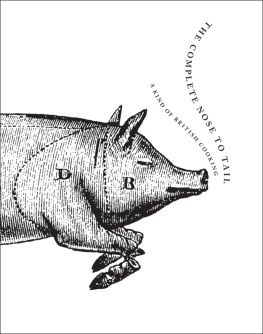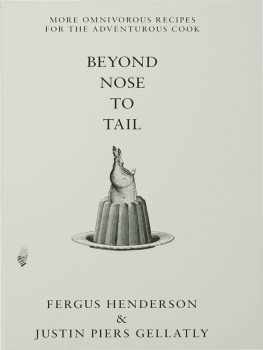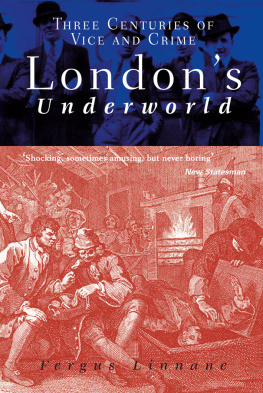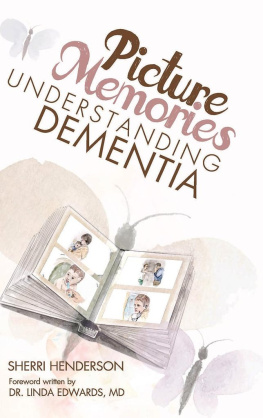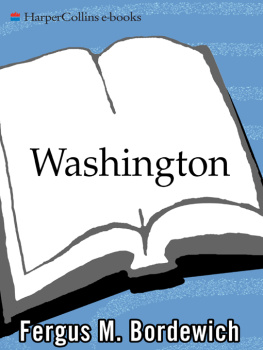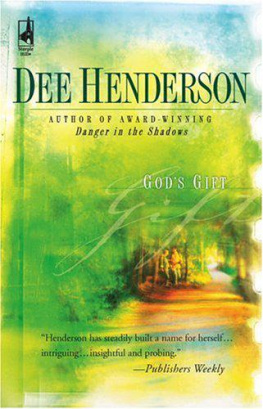
THE
BOOK
OF
St. JOHN

FERGUS HENDERSON & TREVOR GULLIVER
with
Kitty Slydell-Cooper & Jonathan Woolway

CONTENTS

This book reflects a moment in time. It is a testament to every person who has helped to make St. JOHN over the years, all who have come through our doors and all who have been part of our daily work. All who we hope will continue to be part of who we are over the years to come.
About the Authors
Fergus Henderson MBE co-founded St. JOHN in 1994 with Trevor Gulliver, following on from the Hendersons cult French House in Soho. The original St. JOHN Smithfield quickly earned a reputation for its concise and innovative menu and became a must-visit destination on the London restaurant scene. Fergus is known for his promotion of nose to tail eating. St. JOHN now have two more restaurants in London Bread and Wine on Commercial Street and the Neals Yard Bakery.
Trevor Gulliver opened St. JOHN in Smithfield with Fergus Henderson in 1994. The original St. JOHN Smithfield quickly earned a reputation for its concise and innovative menu and became a must-visit destination on the London restaurant scene. St. JOHN now have two more restaurants in London Bread and Wine on Commercial Street and the Neals Yard Bakery.
INTRODUCTION
For some years I have been synonymous with the phrase nose-to-tail. I have watched the words filter into common usage almost biblically, taking on a life of their own and used to mean something so much wider than I envisaged. Every time I see the phrase in print I feel a jolt of proud recognition: the words appear to have struck a linguistic nerve and I am delighted to see them co-opted with such enthusiasm. But still I am a little sad when I find them misunderstood the blood and guts that the words now sometimes conjure are certainly an integral element but they form just one part of lifes rich tapestry of leaves, muscles, stalks, tubers and organs. Nose-to-tail means holistic eating. It is a way of being in the world.
St. JOHN is a British restaurant by default. There was nothing jingoistic in our thinking, no foolish harking back to misremembered glory days. Our place in the world happens to be here, and we cooked British food to tune our stoves to the glorious magic of genius loci. At the start of each year, the cod are fat with fresh roe and the sea kale begins to sprout on the shore; it is a daily marvel that such complementary goodies should appear simultaneously and it is common sense to make use of those delights at the very place and moment of their prime. In just the same way, once an animal has been killed you would be foolish not to make the best use of every single delicious part. It is simply the right thing to do.
Nose-to-tail is not about bravado and it should not be about ego; one should never forget that the point of a kitchen is to cook people their lunch, which they should enjoy. I became a chef because I loved eating. I was spoiled: my father used to take me on his travels to excellent restaurants and take great pleasure in giving me a culinary education, encouraging me to have free rein of the menu and wine list. After my first taste of Crme Brle at the Hole in the Wall in Bath, at the age of six, life was never quite the same: the white heart-shaped dish, the bitter caramel crunch, the richness that lurked beneath the crust by the first spoonful I knew that I wanted to be part of this action forever. I was corrupted. Dad was an architect and I trained to be one too, but when I told him that I was leaving the cause to be a chef he received the news with no great sadness and no great surprise either I had already blotted my copybook by taking kitchen jobs. He cautioned, Okay, be a chef. But be a good one.
The resolve to become a chef came long before I applied to study architecture. I can pinpoint with precision those moments of ah HA! when the die was cast, from that revelation in Bath onwards. Dad loved to eat, Mum loved to cook, both loved to entertain, and these were the carefree times of the late 60s when caution was thrown to the wind and my parents went to bed without tidying up. On those post-dinner-party mornings my freshly woken senses were exposed to the debris of the previous nights revelries: a paisley tablecloth, half-drunk glasses of good claret, the intoxicating ghost of cigar smoke, and the centrepiece: the remains of a large crme caramel. I would inhale with deep pleasure. This was the musk of a good time, the musk that has been my driving motivation ever since.
Mum was always a good cook, but when Marcella Hazan appeared in the Henderson household, in the form of The Classic Italian Cookbook, our lives were transformed. Marcella showed my mother the sophistication of simplicity, giving her confidence and changing our understanding of food. St. JOHN owes more than a little to Italian cookery. The first meal I ever cooked my wife Margot was Cabbage and Truffle Pasta, and Marcellas Tomato Pasta III has been a central feature of our household for the last twenty-five years as our three children have grown up. Each of them now has their own take on the recipe. It is no good for a chef to sleep under their oven; they should make like a whale, keeping their mouth and their mind wide open for the plankton of ideas, and they should spend time with their family. When Margot and I started cooking together, above the French House in Soho, it was she who knocked me into shape and made a proper chef of me.
My restaurant philosophy, though forged in my fathers high-living fire, is different to his. While he was alive he loved St. JOHN and came here very often, which is interesting as my cooking is not the style of food that he preferred. He loved fine dining, as do I of course, but I feel that there are more enduring and more egalitarian ways of nurturing the diner. Through the course of this book I have come to realise that my understanding of restaurants and cooking is becoming increasingly cosmic; I think about the vibrations of a room, about the Great Chef in the Sky and about the mystical thought transference between a chef and his ingredients. Although Dad was more earth-bound, perhaps he did have an influence there too: he had a cosmic understanding of white linen tablecloths.
Cooking is an ongoing dialogue between chefs, between ingredients and between one moment and the next. Our recipes are in a constant state of evolution they are not being streamlined, nor refined, but they are an evolving and subliminal comment on the nature of St. JOHN. We are always yet never the same. St. JOHN has been called an institution and this pleases me; a restaurant should be a permanent part of the fabric of a city, a healthy constant. Institution is a good word, something to aspire to, and the fact that we are celebrating twenty-five years makes me think that we may have succeeded.
When Trevor and I first opened St. JOHN our chefs went AWOL regularly, felled by lengthy benders or disenchanted by my inexperienced leadership. There was a rapid, forced evolution of my team which, though despair-inducing for some time, was eventually for the good as we strengthened and grew. Now our family tree spreads far and wide, often in quite unexpected directions, and I am humbled to bask in the dappled light beneath its leaves. I have often said that I feel like a mother hen (cluck cluck!) with a long and busy line of chicks going forth to establish their own nests, building new things from our branches. There is something intangible about what we do a menu can be quite St. JOHN-ish without being St. JOHN and one can often spot the vibrating aura of the St. JOHN gene pool in a chickadees work. Each of them has lent their own subtle magic to the St. JOHN repertoire, and in this way we hope that the dialogue will continue for another twenty-five years.
Next page

